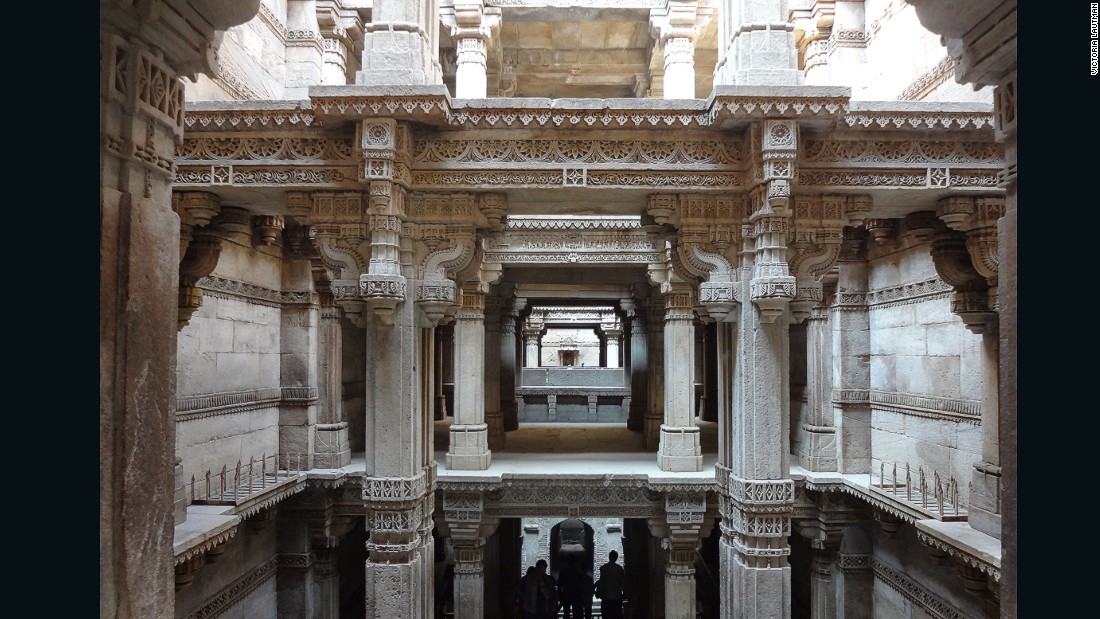Found: India’s ancient secret stepwells

Victoria Lautman's travels sound like something straight out of an Indiana Jones movie. Armed with a humble little point-and-shoot camera ("Well, I'm sliding in horrible pits, I need to be able to hold it in my teeth") the Chicago-based adventure-journalist travels across India hunting for ancient, unexplored ruins.
Lautman's favorite pastime, or "obsession" as she calls it, is finding stepwells, large often cavernous wells in which water may be reached by descending a set of steps. Dating back as far as AD 600, these incredible architectural feats of design have been largely forgotten — until now.
Over the past four years, Lautman has visited over 120 stepwells. "In its heyday there were around 3,000 stepwells throughout India. Now, there are about 1,000 left," she estimates.
Accessing India's deep water tables
Stepwells were traditionally used throughout India to tap into the country's deep water tables — and some, like the Chand Baori (baori, one of the Hindi words for well) in the western state of Rajasthan, run more than 100 feet into the ground.
"They proliferated in places where it was hard to get water, like deserts," Lautman explains. Their designs — which differ widely across regions, are informed by varied environments.
"The shape and width, a lot of those determinations [for design] had to do with the quality of stone and soil. In some sandier places, like Gujarat, there are bridging elements in place to keep walls from collapsing, because the soil is loose," Lautman observes.
Beyond a primary water source, stepwells were used as civic structures — they provided a respite from heat, a place to socialize, and in many cases — functioned as subterranean temples, with intricate carvings of deities.
These days, few stepwells are in use. The majority of them are derelict, filled with trash and abandoned. There are a few more known exceptions. Rani-ki-Vav (the Queen's Stepwell) in Gujarat for example, was recognized as a UNESCO World Heritage site in 2014.
But the majority of them have gone undocumented — which makes Lautman's ability to trace them, even more unusual. She relies on a mix of research and word of mouth.
Hunting for ancient stepwells
"Finding stuff, even with a map in India, is tough," she says, of the difficulty of locating the ones that haven't been researched.
"I usually ask drivers to ask locals because my Hindi is terrible. Then, you drive around in circles, sometimes for days, but eventually you'll find a stepwell. Sometimes it's unbelievably fantastic, sometimes you end up getting dropped off at a pit, with water in it."
Lautman quickly dispels any suggestion that she is a professional photographer. "It's a miracle that the photos look the way they do. I have a good eye, being in the design and architecture world, and I can frame a photo. But I don't know diddly-squat."
The informal, slightly off-the-kilter shots are refreshing — conveying a sense of wonderment and this feeling that you too, have stumbled upon these sites.
Lautman is currently compiling research on the wells, and says she hopes her photos will help spread awareness of their precarious existence.
"There are hundreds of them, just crumbling to dust. My goal is to show people, tell as many people as I can, about these stepwells. People will start asking, 'How do I go see them?' When tourists start coming — then that's when things will be preserved."
Политика конфиденциальности | Правила пользования сайтом

























